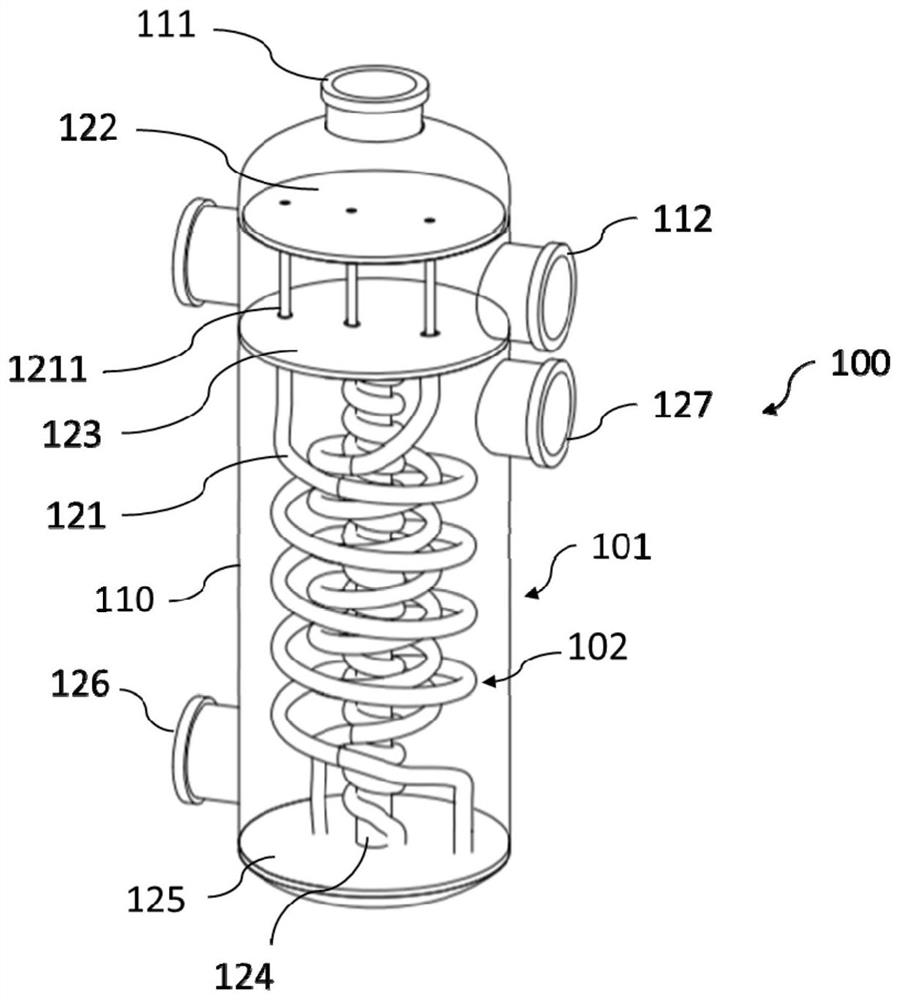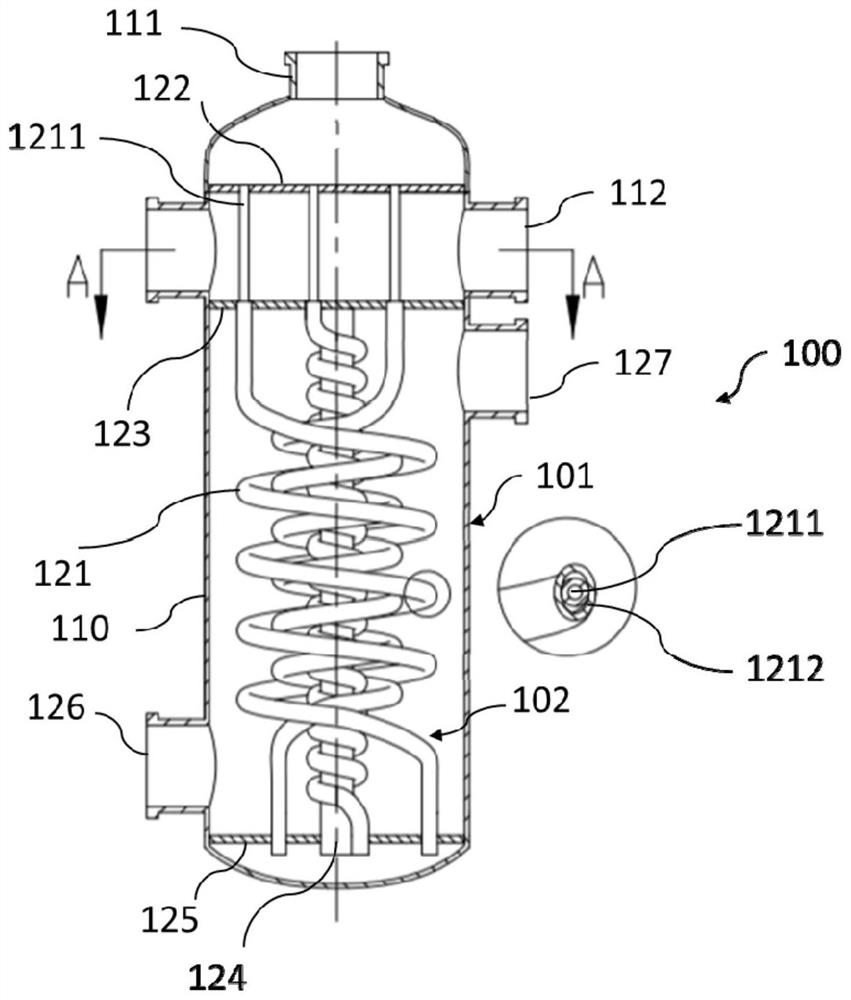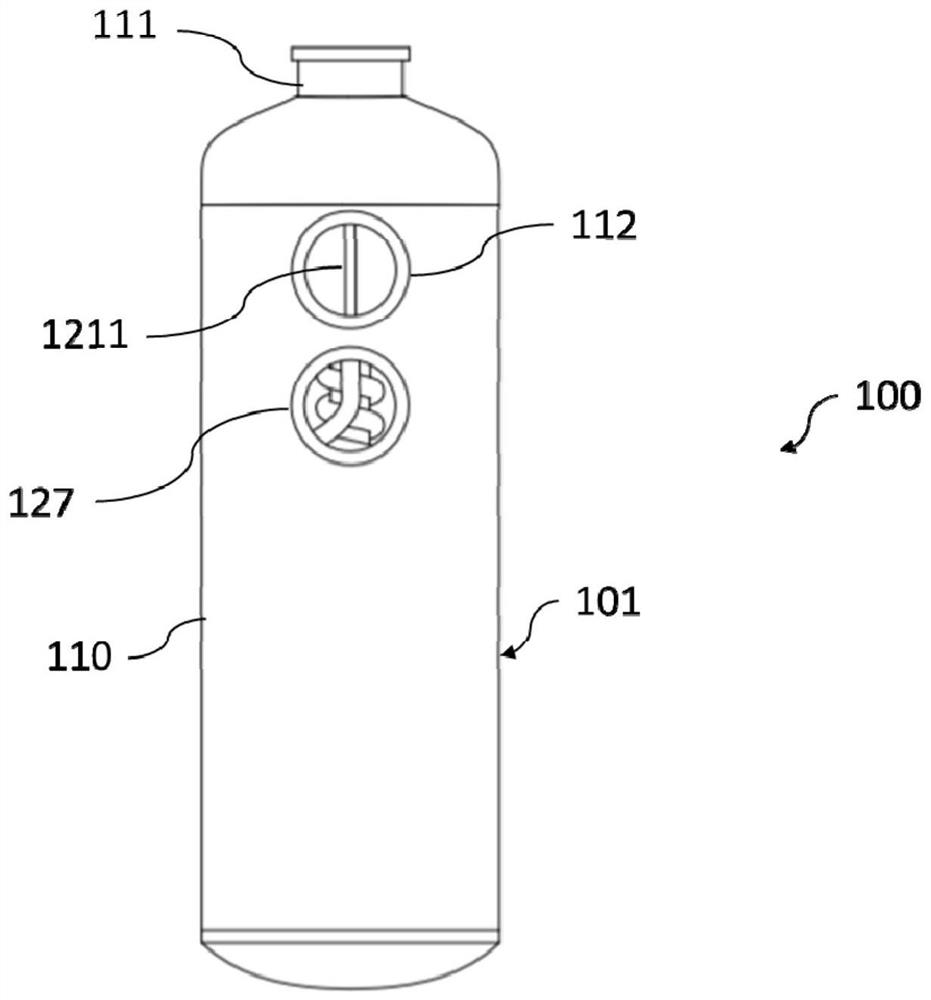Heat exchange tube, heat exchanger tube core, heat exchanger and manufacturing method
A heat exchanger tube, heat exchange tube technology, applied in the heat exchanger tube core, heat exchange tube, heat exchanger and manufacturing fields, can solve the problem of affecting the heat exchange effect and service life of the heat exchanger, waste of high temperature flue gas waste heat , corrosion of metal heat exchange tubes, etc., to reduce the possibility of dew point corrosion, increase the heat exchange area, and avoid stress deformation.
- Summary
- Abstract
- Description
- Claims
- Application Information
AI Technical Summary
Problems solved by technology
Method used
Image
Examples
Embodiment Construction
[0060] The application will be further described in detail below in conjunction with the accompanying drawings and embodiments. It should be understood that the specific embodiments described here are only used to explain related inventions, rather than to limit the invention. It should also be noted that, for ease of description, only parts related to the invention are shown in the drawings.
[0061] In the present invention, the orientation or positional relationship indicated by the terms "upper", "lower", "inner", "outer", "center", "longitudinal", "axial" etc. are based on the orientation or positional relationship shown in the drawings Positional relationship. These terms are mainly used to better describe the present invention and its embodiments, and are not intended to limit that the indicated device, element or component must have a specific orientation, or be constructed and operated in a specific orientation.
[0062] figure 1 It is a perspective view of the hea...
PUM
 Login to View More
Login to View More Abstract
Description
Claims
Application Information
 Login to View More
Login to View More - R&D
- Intellectual Property
- Life Sciences
- Materials
- Tech Scout
- Unparalleled Data Quality
- Higher Quality Content
- 60% Fewer Hallucinations
Browse by: Latest US Patents, China's latest patents, Technical Efficacy Thesaurus, Application Domain, Technology Topic, Popular Technical Reports.
© 2025 PatSnap. All rights reserved.Legal|Privacy policy|Modern Slavery Act Transparency Statement|Sitemap|About US| Contact US: help@patsnap.com



